Encelia frutescens, Button Brittlebush
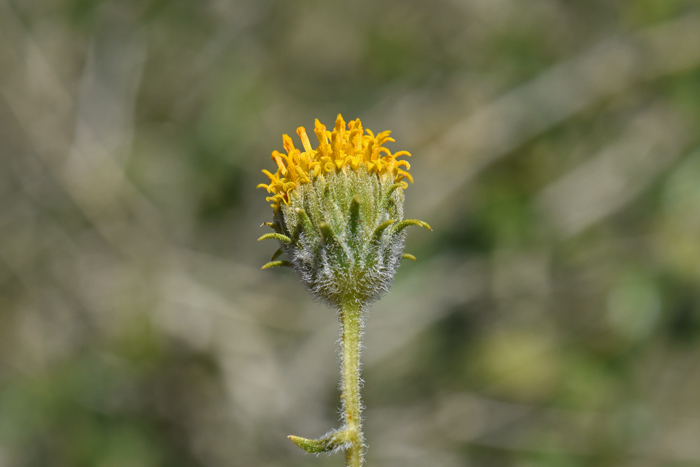
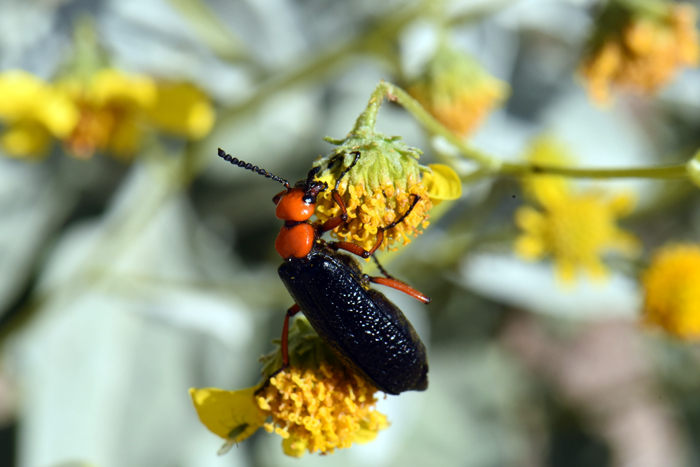
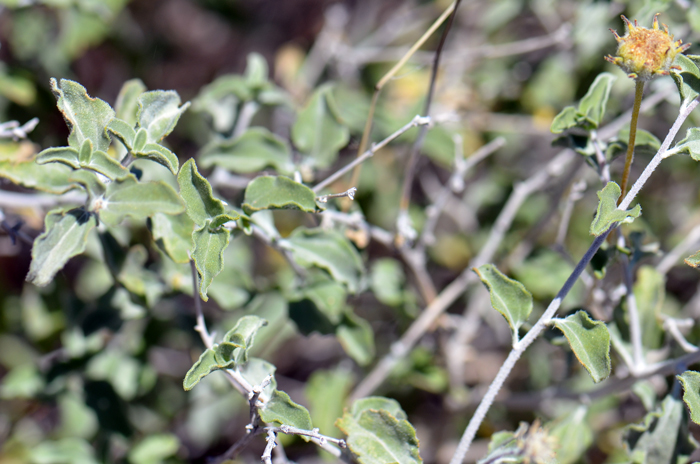
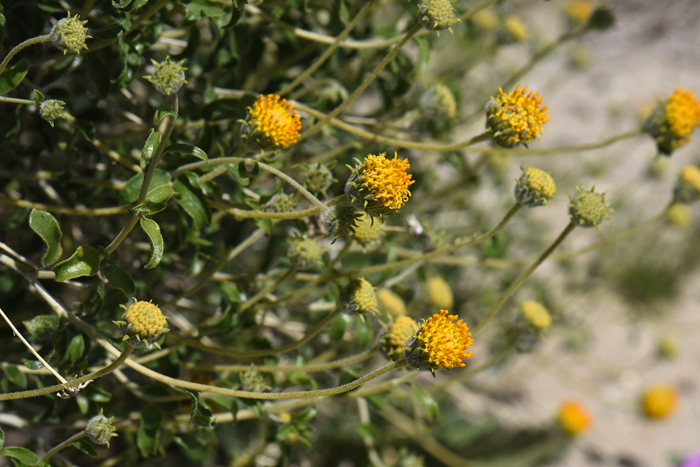
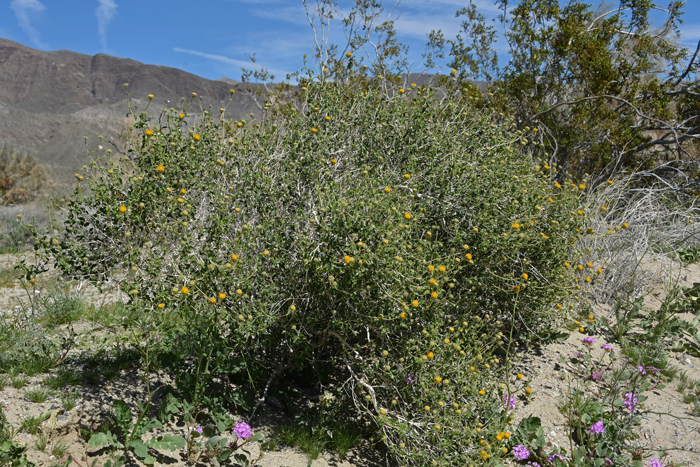
Scientific Name: Encelia frutescens
Common Name: Button Brittlebush
Also Called: Bush Encelia, Green Brittlebush, Rayless Encelia (Spanish: Hierba del Bazo, Rama Blanca)
Family: Asteraceae, Sunflower Family
Synonyms: (Encelia farinosa var. phenicodonta, Encelia farinosa var. radians Brandegee, Encelia frutescens var. frutescens, Encelia frutescens forma virginensis, Encelia frutescens var. virginensis, Simsia frutescens)
Status: Native
Duration: Perennial
Size: Up to 4 feet (122 cm) or more
Growth Form: Shrub or subshrub; rounded profile with slender white stems from short trunks, new stems smooth (glabrous) older stems with split or cracked bark (fissured).
Leaves: Green, dark green to gray-green; leaves alternate along stems; blades elliptic or narrowly ovate; leaves simple, generally upper leaves with short stems ( petioles), drought deciduous, rough with small stiff coarse hairs (strigose).
Flower Color: Yellow, mostly disk flowers, ray flowers less common, solitary flower heads on tips of long strigose flowering stalks (peduncles); bracts or phyllaries surrounding flowering heads not equal, linear or lanceolate; fruit an airborne cypsela.
Flowering Season: January to September in Arizona; February to May and again August to September in California.
Elevation: Sea level to 4,000 feet (0-1,219 m); up to 2,500 feet (0-800 m) in California.
Habitat Preferences: High deserts, rocky slopes, desert washes, flats, slopes, mesas and roadsides.
Recorded Range: Encelia frutescens is found in the southwestern United States in AZ, CA and NV and also in Baja California and northwest Mexico. In Arizona it is found throughout much of the state although few records for the central east and the southeast areas.
North America & US County Distribution Map for Encelia frutescens.
North America species range map for Button Brittlebush, Encelia frutescens:
North American range map courtesy of Virginia Tech, Dept. of Forest Resources & Environmental Conservation
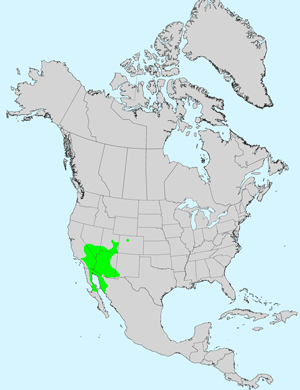
U.S. Weed Information: Unknown
Invasive/Noxious Weed Information: Unknown
Wetland Indicator: Unknown
Threatened/Endangered Information: Unknown
The genus Encelia was published in 1763 by Michel Adanson.
In the Southwestern United States: Arizona, Nevada and Utah each have 4species of Encelia, California has 5 species, New Mexico has 2 species and Texas has 1 species. Data approximate and may be revised.
Comments: Button Brittlebush is primarily a Mojave Desert species and also found in the higher elevations of the Sonoran Desert. It may start blooming early in January and continue well into September following sufficient monsoon rainfall. In burned and disturbed sites, Button Brittlebush reqcts quickly to colonize the area.
The type species for Encelia frutescens is from Agua Caliente, Maricopa County (Emory in 1846), Arizona.
For a comprehensive well documented review of Encelia frutescens see the USDA USFS Fire Effects Information System, or FEIS.
Button Brittlebush is closely related to Brittlebush which has cymose or panicled flower heads with a mostly smooth (glabrous) inflorescence and its leaves are densely whitish. Button Brittlebush has solitary heads and pubescent (strigose) stems and the leaves are not whitish.
In Southwest Desert Flora also see similar species: Brittlebush, Encelia farinosa, Virgin River Brittlebush, Encelia virginensis, Hairy Desertsunflower, Geraea canescens and Parish's Goldeneye, Bahiopsis parishii.
The genus Encelia was published in 1763 by Michel Adanson.
The species epithet frutescens (frutes'cens:) means shrubby.

